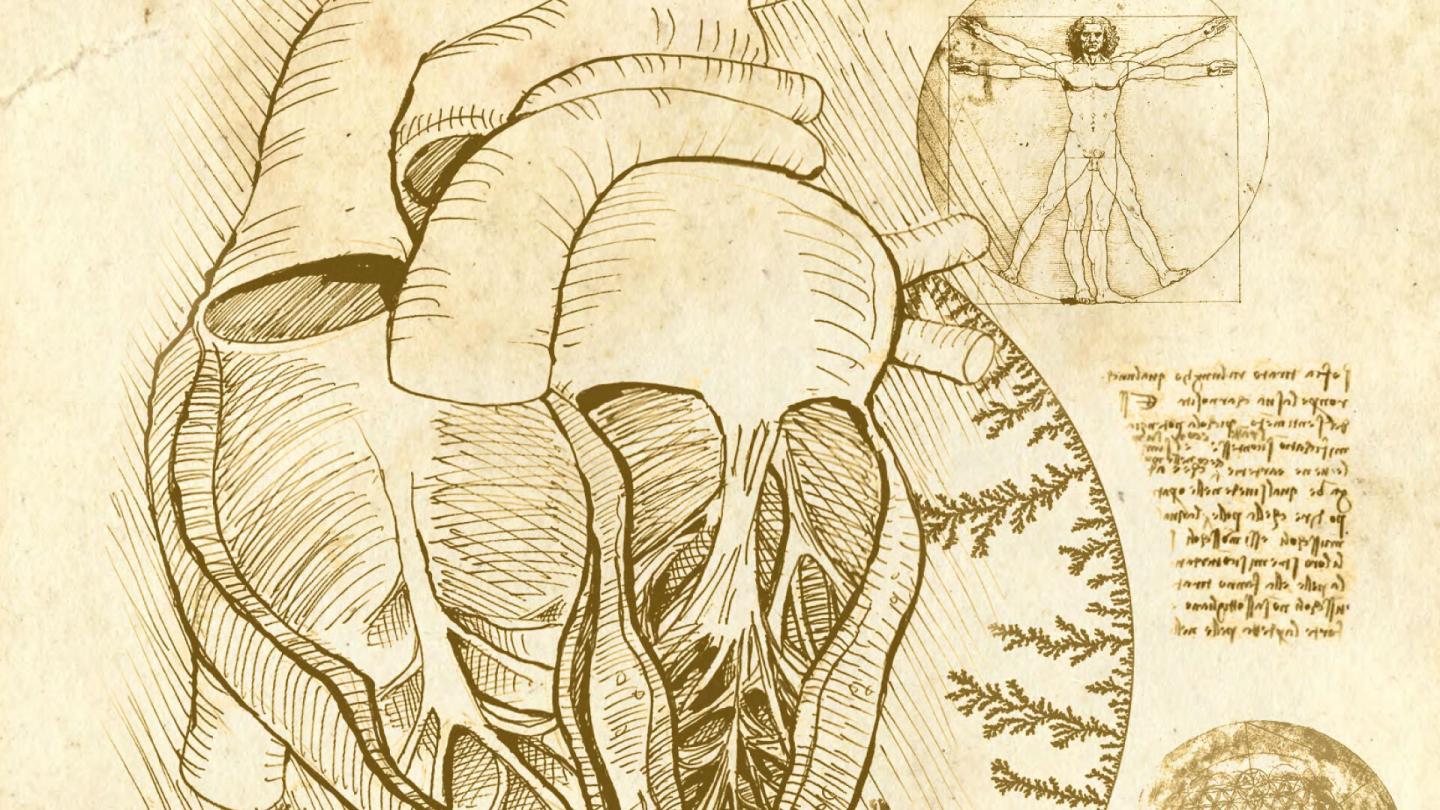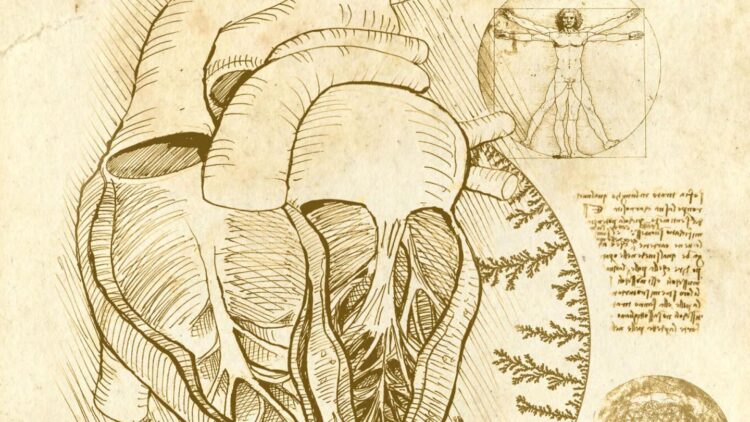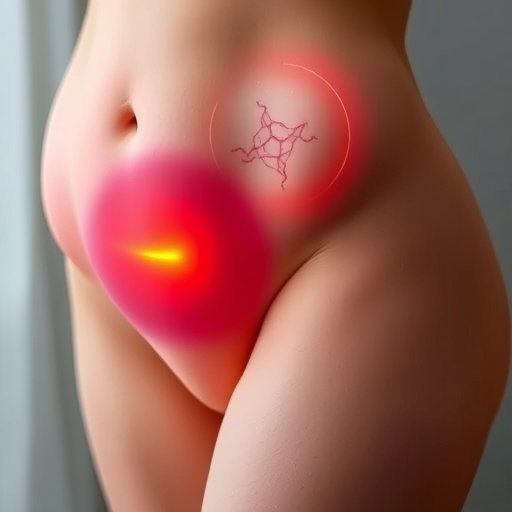
Credit: Spencer Philipps/EMBL-EBI, 2020
Researchers have investigated the function of a complex mesh of muscle fibers that line the inner surface of the heart. The study, published in the journal Nature, sheds light on questions asked by Leonardo da Vinci 500 years ago, and shows how the shape of these muscles impacts heart performance and heart failure.
In humans, the heart is the first functional organ to develop and starts beating spontaneously only four weeks after conception. Early in development, the heart grows an intricate network of muscle fibers–called trabeculae–that form geometric patterns on the heart’s inner surface. These are thought to help oxygenate the developing heart, but their function in adults has remained an unsolved puzzle since the 16th century.
“Our work significantly advanced our understanding of the importance of myocardial trabeculae,” explains Hannah Meyer, a Cold Spring Harbor Laboratory Fellow. “Perhaps even more importantly, we also showed the value of a truly multidisciplinary team of researchers. Only the combination of genetics, clinical research, and bioengineering led us to discover the unexpected role of myocardial trabeculae in the function of the adult heart.”
To understand the roles and development of trabeculae, an international team of researchers used artificial intelligence to analyse 25,000 magnetic resonance imaging (MRI) scans of the heart, along with associated heart morphology and genetic data. The study reveals how trabeculae work and develop, and how their shape can influence heart disease. UK Biobank has made the study data openly available.
Leonardo da Vinci was the first to sketch trabeculae and their snowflake-like fractal patterns in the 16th century. He speculated that they warm the blood as it flows through the heart, but their true importance has not been recognized until now.
“Our findings answer very old questions in basic human biology. As large-scale genetic analyses and artificial intelligence progress, we’re rebooting our understanding of physiology to an unprecedented scale,” says Ewan Birney, deputy director general of EMBL.
The research suggests that the rough surface of the heart ventricles allows blood to flow more efficiently during each heartbeat, just like the dimples on a golf ball reduce air resistance and help the ball travel further.
The study also highlights six regions in human DNA that affect how the fractal patterns in these muscle fibers develop. Intriguingly, the researchers found that two of these regions also regulate branching of nerve cells, suggesting a similar mechanism may be at work in the developing brain.
The researchers discovered that the shape of trabeculae affects the performance of the heart, suggesting a potential link to heart disease. To confirm this, they analyzed genetic data from 50,000 patients and found that different fractal patterns in these muscle fibers affected the risk of developing heart failure. Nearly five million Americans suffer from congestive heart failure.
Further research on trabeculae may help scientists better understand how common heart diseases develop and explore new approaches to treatment.
“Leonardo da Vinci sketched these intricate muscles inside the heart 500 years ago, and it’s only now that we’re beginning to understand how important they are to human health. This work offers an exciting new direction for research into heart failure,” says Declan O’Regan, clinical scientist and consultant radiologist at the MRC London Institute of Medical Sciences. This project included collaborators at Cold Spring Harbor Laboratory, EMBL’s European Bioinformatics Institute (EMBL-EBI), the MRC London Institute of Medical Sciences, Heidelberg University, and the Politecnico di Milano.
###
About Cold Spring Harbor Laboratory
Founded in 1890, Cold Spring Harbor Laboratory has shaped contemporary biomedical research and education with programs in cancer, neuroscience, plant biology and quantitative biology. Home to eight Nobel Prize winners, the private, not-for-profit Laboratory employs 1,100 people including 600 scientists, students and technicians. The Meetings & Courses Program annually hosts more than 12,000 scientists. The Laboratory’s education arm also includes an academic publishing house, a graduate school and the DNA Learning Center with programs for middle and high school students and teachers. For more information, visit http://www.
About the MRC London Institute of Medical Sciences (LMS)
The MRC London Institute of Medical Sciences (LMS) is a research institute which aims to advance the understanding of biology and its application to medicine. Our research is focused on some of the UK’s major health challenges that arise from changes in diet (obesity, diabetes and heart disease) and increased lifespan (dementia and cancer). Through tackling fundamental questions about the links between our genes, environmental stresses such as diet, and the way our bodies age researchers aim to translate this knowledge to improve the understanding, diagnosis and treatment of diverse medical conditions. Research at the institute falls into three sections: epigenetics, genes and metabolism and quantitative biology. The LMS is core funded by the Medical Research Council (MRC), which is part of UK Research and Innovation (UKRI).
http://www.
About European Bioinformatics Institute (EMBL-EBI)
The European Bioinformatics Institute (EMBL-EBI) is a global leader in the storage, analysis and dissemination of large biological datasets. We help scientists realise the potential of ‘big data’ by enhancing their ability to exploit complex information to make discoveries that benefit humankind.
We are at the forefront of computational biology research, with work spanning sequence analysis methods, multi-dimensional statistical analysis and data-driven biological discovery, from plant biology to mammalian development and disease.
We are part of EMBL and are located on the Wellcome Genome Campus, one of the world’s largest concentrations of scientific and technical expertise in genomics. https:/
Funders:
RCUK/Medical Research Council (MRC); British Heart Foundation (BHF); Wellcome Trust; National Institute of Environmental Health Sciences; Heidelberg University; the Simons Center for Quantitative Biology at Cold Spring Harbor Laboratory; the National Institute for Health Research Biomedical Research Centre; The Edmond J Safra Foundation and Lily Safra; National Institute for Health Research; the UK Dementia Research Institute, UK Research and Innovation Health; the Research Center for Molecular Medicine (HRCMM); Deutsche Herzstiftung e.V.; and Joachim Herz Stiftung.
Media Contact
Sara Roncero-Menendez
[email protected]
Related Journal Article
http://dx.





